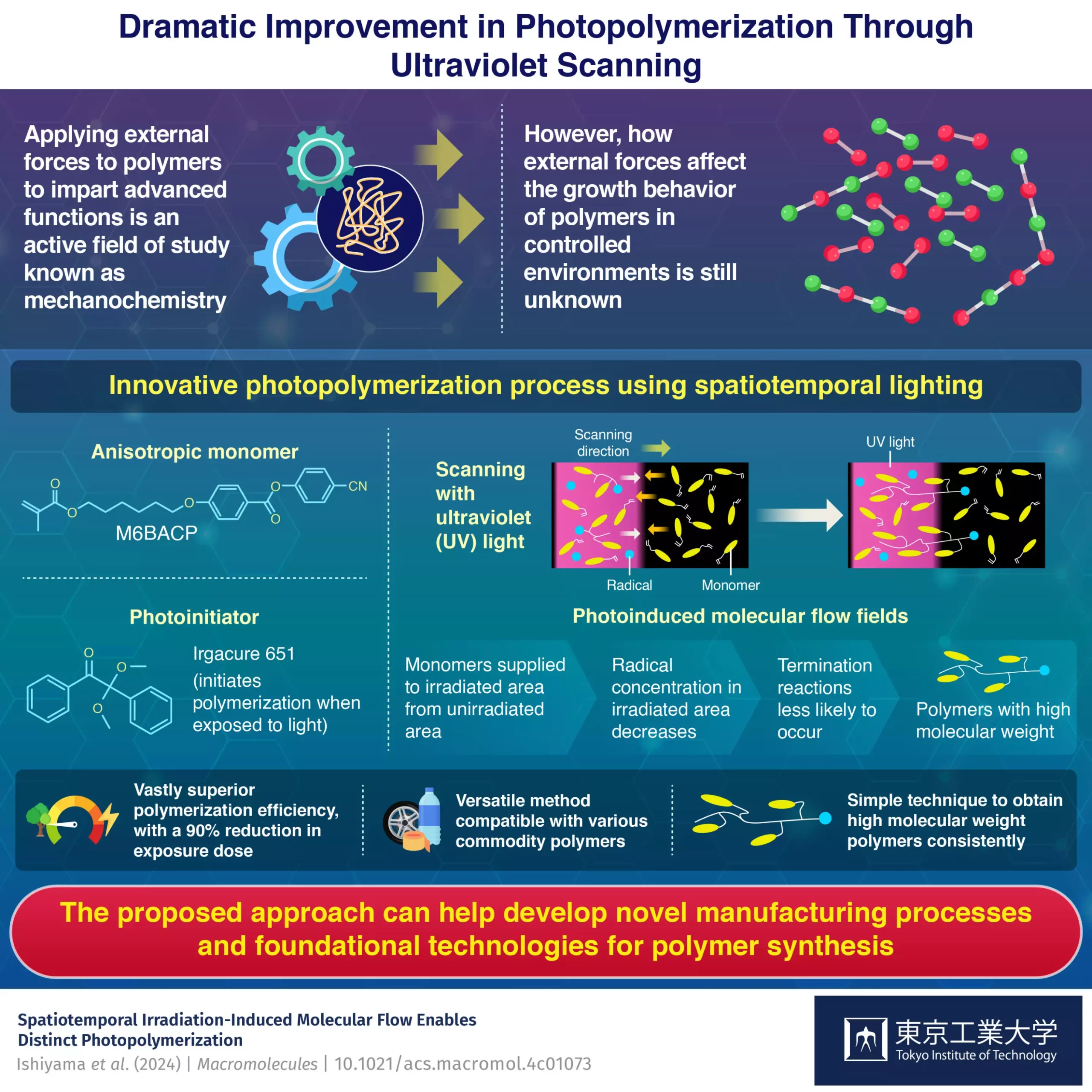Polymers are complex materials composed of long chains of molecules, with their properties largely determined by the interactions between these chains. Traditionally, external forces exerted on polymers have been viewed as destructive, leading to disentanglement or breakage of the constituent chains. However, recent research has shown that external forces can also have constructive effects on polymers, offering new opportunities to tailor their properties and functionalities.
In the field of mechanochemistry, scientists have leveraged mechanical forces and flow fields to induce changes in polymers, such as altering their phase, optical properties, and crystallinity. This innovative approach has opened up new avenues for controlling polymer behavior and synthesis, challenging the conventional understanding of how external forces impact polymers.
A recent study led by Professor Atsushi Shishido from the Tokyo Institute of Technology delves into the effects of dynamic UV lighting on the process of photopolymerization. By using a moving slit to shine UV light on a solution containing M6BACP monomers and a photoinitiator (Irgacure 651), the researchers observed significant changes in the resulting polymers compared to traditional photopolymerization methods.
The researchers found that scanning UV light resulted in high molecular weight polymers with a 90% reduction in exposure dose, highlighting the potential for improved polymerization efficiency. The movement of UV light induced molecular flows that facilitated the diffusion of growing polymers and radicals, leading to optimized polymer chain growth and reduced termination reactions.
The developed method not only offers insights into photopolymerization reactions but also presents a practical approach for enhancing industrial processes and polymeric materials. By simply adding movement to the irradiation light, energy costs associated with photopolymerization can be minimized, making it a more sustainable and cost-effective manufacturing process.
The advantages observed in this study extend beyond M6BACP to other commodity polymers like acrylates, suggesting broader applications for the proposed technique. By improving polymer synthesis efficiency and reducing energy consumption, this innovative approach could revolutionize the way polymers are manufactured, paving the way for the development of superior materials in various industries.


Leave a Reply